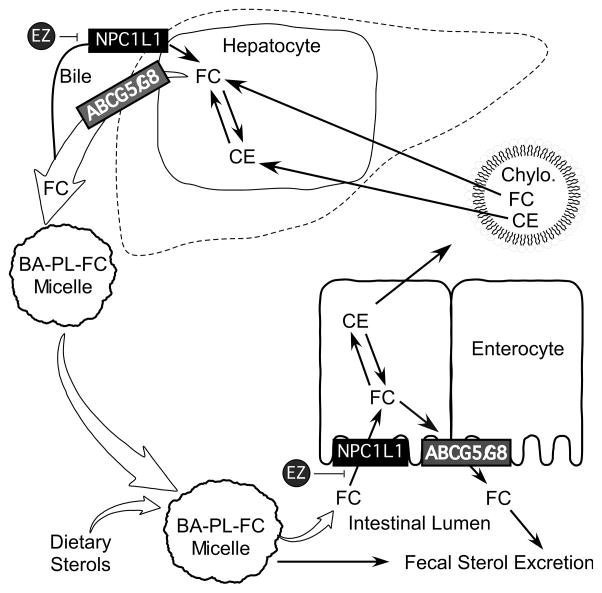Fig. 1.
Role of NPC1L1 and ABCG5/ABCG8 in enterohepatic circulation of sterols. In the gut lumen, free cholesterol (FC) derived from diet and bile is mixed with bile acids (BA) and phospholipids (PL) to form micelles. FC in micelles is transported by NPC1L1 into the absorptive enterocyte where the majority of FC is converted to cholesteryl ester (CE) for the assembly into chylomicrons (Chylo.) for delivery into the body. A proportion of FC in enterocyte is presumably secreted back into the gut lumen by ABCG5/ABCG8. Chylomicrons deliver their cargo (FC and CE) to the liver. In hepatocytes, a proportion of FC is secreted into the canalicular bile by ABCG5/ABCG8. FC in the canalicular bile may be recaptured by NPC1L1 back into hepatocyte or delivered to the gut lumen for another round of enterohepatic circulation. Importantly, ezetimibe (EZ) blocks NPC1L1-dependent sterol uptake at both the apical surface of enterocytes and the canalicular membrane of hepatocytes.

